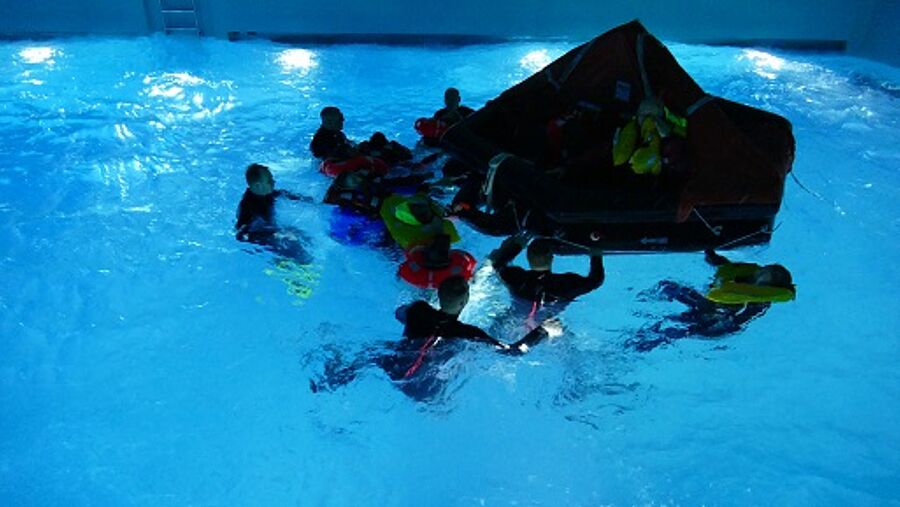
* Pantaenius UK Limited is authorised and regulated by the Financial Conduct Authority (Authorised No.308688)
09.08.2019
Pantaenius employees regularly take part in offshore safety training. Mid-March, Ole Pietschke and Mario Wodrich went through the motions of an emergency situation and their conclusion was that despite being an extreme experience, the training is a must for every responsible cruising and offshore sailor.

40 years ago, one of the worst tragedies of sailing happened: In 1979, the participants of the Fastnet Race enroute from Cowes to Plymouth hit a hurricane-force storm in which 19 sailors lost their lives in the Irish Sea. In order to avoid life endangering mistakes based on lack of knowledge and to increase the general safety at sea in the future, the World Sailing Association revised and tightened the safety regulations for offshore regattas after this catastrophe. Since then, certified safety training has become mandatory for crews participating in regattas of categories 0, 1 or 2.
Pantaenius employees also take part in the training over and over again. Ole Pietschke, who is responsible for event marketing at the yacht insurance expert, has already repeated it. "I do the training because I drive our Begleit RIB during regattas and events and in an emergency must be able to provide assistance. It is also important for me to be competent at advising our customers on all aspects of safety on board in a situation-specific manner and to give them valuable tips."
For Ole Pietschke, training time came around again mid-March. He took part in the "Refresher" course, which has to be repeated within five years at the Elsfleth Maritime Competence Centre, together with his sales colleague Mario Wodrich, who experienced the training for the first time. After a theory-based unit covering emergency procedures, first aid on board and important safety equipment, the practical part followed. This included firefighting and combatting leaks, boarding the life raft and gathering to form a safe group in rough water - all this was done with participants wearing full gear ie. oilskins, sea boots and life jackets.
"To be thrown back and forth twelve times in a life raft in rough seas is an extreme experience," reports Mario Wodrich. Darkness, storms and waves up to a height of 2.50 metres can be simulated in the Elsfleth facility. "The equipment worn under these conditions separates the wheat from the chaff. One participant found that the rescue harness was not stitched into the vest at all," says Wodrich. A failure in the equipment used was an isolated case, but many a rescue harness can cause problems in the water rather than creating a feeling of safety. For example, the sales expert himself found his 275 Newton life jacket to be too tight: "I could hardly breathe and swimming was very difficult.”
For Mario Wodrich, the experience of floating in the water with oilskins plus a life jacket, seeing how heavy clothes become, how immobile you are and how quickly you freeze even in water at a temperature of 22 degrees was extremely significant. "All this helps one avoid mistakes, react quickly and above all correctly in an emergency, instead of endangering one's own life and that of the crew.”
Safety training listed by the World Sailing Standard are offered throughout Germany.
An overview of certified training centres can be found at www.dsv.org/akademie/offshore-trainings.